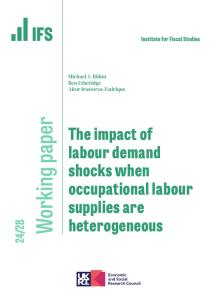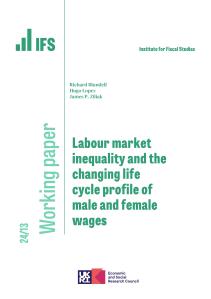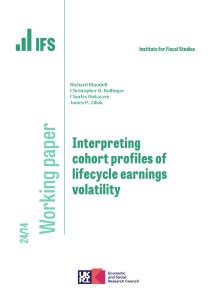While a lot of the focus on the employment effects of the pandemic has, rightly, been on the young, employees over the age of 65 were 40% more likely to be furloughed in late April than those in their 40s (14% versus 10%). As the furlough scheme is wound down over the summer, we can expect to see increased numbers of older jobseekers, many of whom may face significant challenges when it comes to finding new jobs.
New research on the patterns of work for 50- to 69-year-olds, published today by the Institute for Fiscal Studies and funded by the Centre for Ageing Better, shows that:
- Before the pandemic, older workers were less likely to return to work after spells of unemployment than younger workers. Among all those unemployed in their late 50s, less than one in three returned to work over the course of a year, compared with about half of those unemployed in their mid 30s.
- Among older workers the long-term unemployed are much less likely to re-enter work than those who have recently become unemployed. Those with lower levels of education and women have also historically been particularly less likely to re-enter work after becoming unemployed.
- There are a number of reasons that finding new work may be challenging for people in their 50s and 60s. Most older workers do not have much recent experience of searching for work: over two-thirds (69%) of 55-year-old workers have been with their employer for more than five years. Older workers are also less likely than younger workers to change occupation (which may be necessary as e-commerce continues to boom compared with the high street). Only 3% of workers aged 50–69 typically change occupation over the course of a year, around half the rate of workers in their mid 30s.
The report also highlights the importance of flexibility in the labour market among older workers, particularly regarding hours of work. Key findings include:
- Before the pandemic, there was significant appetite for reduced hours among older workers – 16% of 50- to 69-year-olds in paid work wanted to work fewer hours.
- Among full-time workers aged 60 who are still in work one year later, around 10% move into part-time work. These movements are more common (by around 2 percentage points) amongst people with higher levels of education than amongst those with lower levels of education, and among those living in less deprived areas compared with those in more deprived areas, holding all else equal.
- However,around 7% of older workers in 2019 wanted to work more hours per week. They are more likely to have low earnings and shorter job tenures, be in their 50s and have temporary employment contracts.
Laurence O’Brien, a Research Economist at IFS and an author of the report, said:
“There are a number of reasons that finding new work after the end of the furlough scheme might be challenging for many older jobseekers. Many older workers do not have much recent experience of looking for a job. Older workers are also less likely than younger workers to change occupation in normal times – and these transitions may become more important as the economy adjusts after the pandemic. It will therefore be important for the government to appropriately support older jobseekers back into the labour market going forwards.”
Heidi Karjalainen, a Research Economist at IFS and another author of the report, said:
“Before the pandemic, significant numbers of older workers wanted lower hours of work and more flexibility. Part-time work has a key benefit of balancing life inside and outside of work, and for some workers it acts as a way of making a more gradual transition towards retirement. But the fact that those with higher rates of education and living in less deprived areas are more likely to make this switch suggests that this option is not equally open to, or possible for, everyone. It would be a positive outcome if adjustments to working practices in the wake of the pandemic allow more people the opportunity of working flexibly.”
Emily Andrews, Deputy Director of Evidence at the Centre for Ageing Better, which funded the report, said:
“The picture is currently very worrying for older workers furloughed or made redundant during the pandemic. This new research shows that even before the pandemic, only a third of unemployed people in their late 50s returned to work within a year. In a competitive job market, many older workers are likely to struggle to get back into work.
“It’s vital then that in the wake of the crisis, the right support is in place to get over-50s back to work and prevent them falling into long-term unemployment – which would risk seeing many fall out of the workforce for good.
“Government must make this group a priority, providing tailored support that takes into the needs of the over-50s and the barriers they may face to finding work. In addition, government must send a strong message to employers, job coaches and employment support services that over-50s are just as entitled to support as younger workers.
“These new figures also show a huge appetite for flexible and part-time working, with 16% of people in their 50s and 60s wanting to work fewer hours. The right to request flexible working from day 1 was expected to be announced in the now missing Employment Bill – which the government should now bring before parliament without delay.”












